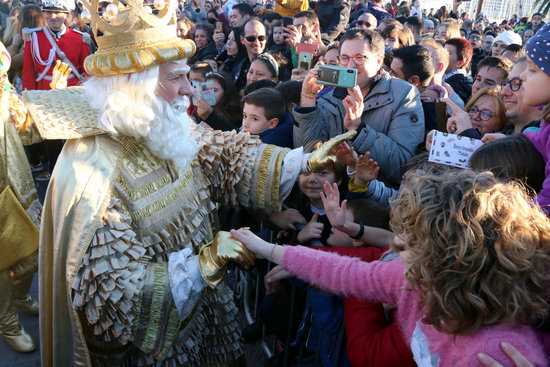Thought the holiday season was over? Three Kings is just around the corner
Epiphany, celebrated on January 6, marks the Wise Men's arrival in Bethlehem after Jesus' birth

What with the New Year – new decade even! – and back to work for many of us as we get over the excesses and overindulgences of the past few weeks, some of us not yet failing in our resolutions, you'd be forgiven for assuming the holiday season was already over, especially if you're new to this neck of the woods.
But here’s the thing in Catalonia – as Christmas and New Year are just behind us, that means Three Kings' Day arrives on January 6! This celebration, one of the biggest in the festive calendar in Catalonia, is the traditional night for the three magic kings to arrive and deliver presents for children across the country.
Not sure what that is? Need to spruce up on your biblical lore? Want to get back in the spirit of giving and receiving gifts? Not to worry, here we explain all you need to know about this holiday.
Legend has it…
According to Western Christianity, Epiphany, or Three Kings' Day on January 6, marks the arrival of the three Wise Men (or Magic Kings, take your pick) to Bethlehem to visit baby Jesus in the manger shortly after his birth – right after the 12 days of Christmas, to be more precise. And yes, that carol they quite possibly made you sing at school as a child refers to this 12-day period.
In any case, Melchior (in Catalan, 'Melcior'), Caspar ('Gaspar') and Balthasar ('Baltasar') were guided from afar by a star, bringing the young infant gold, frankincense, and myrrh. Because of this, many Catholic countries throughout the world celebrate the day with gifts, as on Christmas Day, December 25.
Three Kings' Day January 6
The night of the arrival of the three kings, January 5 going into January 6, across Catalonia and indeed Spain there are huge festive parades, known as the 'cavalcada'. These parades are attended by thousands across the land, and children scramble to collect as many sweets as they can when members of the parade floats throw the treats into the crowd.
Historically, the kings were priests of an old religion known as Zoroastrianism, one of the oldest monotheistic religions in the world. They studied the stars and astrology and were regarded as highly noble people for their time.
However, a heated debate has been ongoing in recent years over the depiction of the king Balthasar. This particular king is black, and throughout history has been placed in the parade in blackface - a racist trope of a white person with their skin painted to represent a black person. These days, most towns in Catalonia avoid this outdated imagery by hiring a black person to play the role of the king, but some towns still do it the old way, leading to some controversy.
Before going to bed, people will leave their shoes out by their door at night, and the tradition says that the kings arrive in their homes and leave candy. For the luckiest in the country, the kings will even be so kind as to leave larger presents too, as the three wise men visited the baby Jesus to leave presents on this day.
And of course, what Catalan tradition would be complete without a huge festive feast? Once again on January 6, families gather for another huge lunch. The meal for this day is considered even bigger than that of December 25 and wouldn't be complete without the 'Tortell de reis', a special cake with a bean and a king figurine hidden inside it. Traditionally, the person who stumbles upon the bean is said to have to pay for the cake, while the person who finds the king in their slice gets to put on a paper crown that is sold with the cake.
This year's Three Kings parade in Barcelona
The Catalan capital’s Kings parade got underway on Sunday the 5th at 4 pm, with the arrival of the three kings by boat, as is tradition. King Gaspar led the first float, with a new addition this year of a float of the Giant Carboner to close off the entourage.
On the Marqués de l'Argentera Avenue, they started a five-kilometer route to Maria Cristina Avenue, where they arrived at nine in the evening after having distributed more than seven tons of candy from the floats.
Among dancers, actors, chancellors, and volunteers, 1,157 participants in 12 large blocks took part in the traveling party lasting a kilometer, with a follow-up of about an hour.